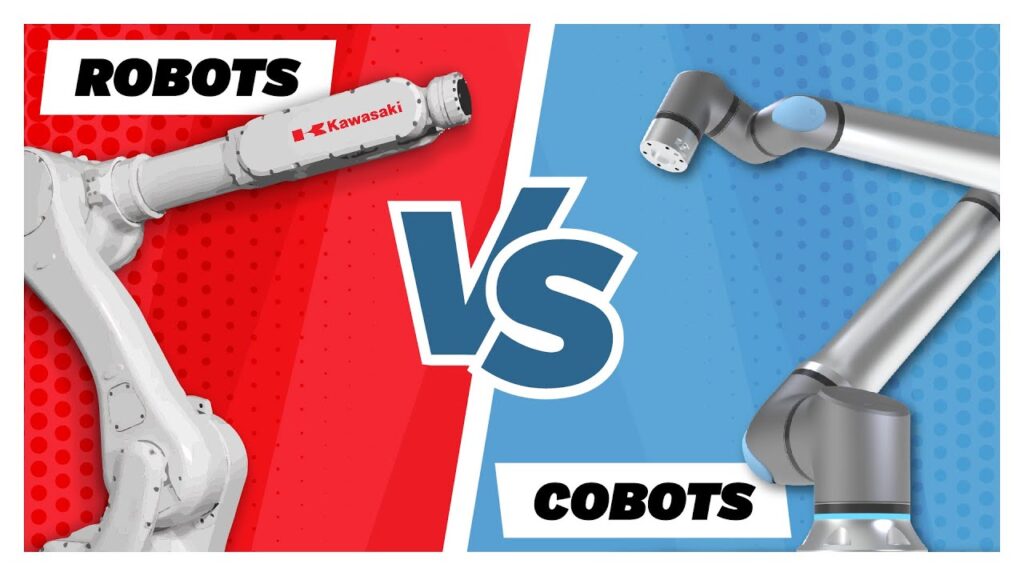Industrial and Collaborative Robots Revolutionize Manufacturing
In today’s rapidly evolving world, it’s no secret that technology is advancing at an unprecedented rate. Industries and businesses across the globe are constantly seeking ways to improve their efficiency, productivity, and profitability, and one area where this is particularly evident is in the manufacturing sector. Specifically, the rise of industrial and collaborative robots has transformed the way we produce goods, and their impact is undeniable.
According to a recent video released by the International Federation of Robotics (IFR), industrial and collaborative robots are rapidly taking over manufacturing processes, offering numerous advantages over traditional human labor. The video, titled “Industrial Robots vs. Collaborative Robots | A Clear Winner?”, sheds light on this technologically driven revolution and explores the benefits and challenges associated with implementing these automated systems.
In the video, the presenter discusses how industrial robots, characterized by their high-performance capabilities and sophisticated programming, are primarily designed to carry out repetitive and high-precision tasks. Equipped with advanced sensors, these robots can operate autonomously, ensuring accuracy and consistency in manufacturing processes. By automating these tasks, companies can significantly increase their production output, minimize errors, and enhance overall product quality.
On the other hand, the video also highlights the emergence of collaborative robots, commonly referred to as cobots, which are specifically designed to work alongside human workers. Unlike their industrial counterparts, cobots possess a high level of adaptability and versatility, making them suitable for a wide range of tasks in various manufacturing environments. These cobots are equipped with advanced safety features, such as force-limiting sensors and responsive software, ensuring a safe and productive collaboration between humans and machines.
The adoption of industrial and collaborative robots in the manufacturing industry has brought about transformative changes, benefiting both businesses and employees. By automating routine and physically demanding tasks, companies can reduce human labor costs, improve workplace safety, and enhance overall operational efficiency. This, in turn, allows human workers to shift their focus towards more complex and intellectually stimulating tasks, fostering innovation and creativity within the workforce.
However, as with any technological advancement, challenges and concerns arise alongside the benefits. One key challenge highlighted in the video is the need for proper integration and programming of these robots. Companies must invest in skilled technical engineers who possess the expertise to effectively program and maintain these robotic systems. Without proper integration, a company may not fully leverage the potential of industrial and collaborative robots, hindering their progress and compromising their competitive edge.
Moreover, the video also sheds light on the potential impact of automation on the workforce. While robots offer immense benefits in terms of efficiency and productivity, there are legitimate concerns regarding job displacement. The fear that robots will replace human workers entirely is a recurring theme in discussions surrounding automation. It is crucial for industries to address these concerns by fostering a culture of retraining and upskilling, ensuring that employees are equipped with the necessary skills to adapt to the changing landscape.
In conclusion, the video presented by the International Federation of Robotics highlights the growing importance of industrial and collaborative robots in revolutionizing the manufacturing industry. It showcases the advantages of these robotic systems in terms of increased productivity, improved product quality, and enhanced workplace safety. However, it also emphasizes the need for proper integration, skilled technical engineers, and addressing concerns regarding job displacement. As technology continues to advance, it is essential for businesses to embrace these transformative changes and capitalize on the numerous benefits that industrial and collaborative robots offer.
Industrial Robot
“Decoding the Industrial Robots vs. Collaborative Robots Debate: Who Takes the Crown?”


